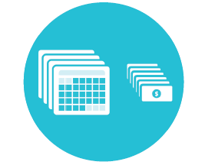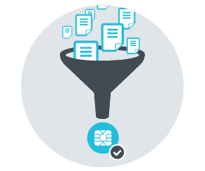In 2015, the US became the last developed country to migrate to EMV – a new more secure payment acceptance system. EMV has had tremendous success in many other countries, such as the UK, Australia, and Canada, in curbing credit card fraud. Merchants in the US are now required to upgrade their payment technology to accept EMV cards to avoid the liability of any chargebacks due to fraud. Many big box retailers have proactively upgraded their payment technology to accept EMV, however, many small merchants are falling behind.
The small merchant market today is made up of SMBs using tablet-based mPOS solutions and other micro-merchants using smartphones with mPOS card readers. Since most of these businesses work via an Independent Software Vendor (ISV) that builds the payment solution for them, the responsibility of upgrading the payment technology falls on the ISVs – but the process isn’t as simple as it seems. Let's look at three key challenges that ISVs face while enabling EMV for their mPOS solutions:
1. Implementing EMV is complex
 In a typical EMV transaction, multiple streams of data are sent back and forth and is a lot more complex from a development standpoint when compared to magstripe. For ISVs whose core competency is not payments, developing EMV versions of their existing mPOS applications is not easy. As a result, many ISVs are not able to build and provide these upgrades to their customers.
In a typical EMV transaction, multiple streams of data are sent back and forth and is a lot more complex from a development standpoint when compared to magstripe. For ISVs whose core competency is not payments, developing EMV versions of their existing mPOS applications is not easy. As a result, many ISVs are not able to build and provide these upgrades to their customers.
2. Time-consuming & expensive certification process
 For the ISVs that are able to build their own EMV enabled mPOS applications, they are required to integrate it with an EMV-certified mPOS card reader and to their processor of choice. After performing these technical integrations, the ISV must submit their solution for certification by both the processor and the card brands. This certification is for the end-to-end transaction and therefore must be redone whenever changes are made to any of the system components (mobile app, card reader, gateway, etc.), resulting in a recertification. This certification process can take a few weeks up to 4 – 6 months and the processors typically charge a very high fee per certification.
For the ISVs that are able to build their own EMV enabled mPOS applications, they are required to integrate it with an EMV-certified mPOS card reader and to their processor of choice. After performing these technical integrations, the ISV must submit their solution for certification by both the processor and the card brands. This certification is for the end-to-end transaction and therefore must be redone whenever changes are made to any of the system components (mobile app, card reader, gateway, etc.), resulting in a recertification. This certification process can take a few weeks up to 4 – 6 months and the processors typically charge a very high fee per certification.
3. Certification Bottleneck
 As the US EMV migration deadline approached in 2015, every EMV acceptance application and device required certification from the processor. Because all ISVs and retailers were looking to get these certifications completed at the same time, the processors became overwhelmed with the demand, creating a backlog. As a result, certifications were prioritized and mPOS often took a backseat, increasing the time it has taken for many ISVs to bring their EMV solution to market.
As the US EMV migration deadline approached in 2015, every EMV acceptance application and device required certification from the processor. Because all ISVs and retailers were looking to get these certifications completed at the same time, the processors became overwhelmed with the demand, creating a backlog. As a result, certifications were prioritized and mPOS often took a backseat, increasing the time it has taken for many ISVs to bring their EMV solution to market.
There is an easier way
For ISVs, enabling EMV payment acceptance within their mPOS solutions can seem like an overwhelming task, but there are ways to tackle it. By using a powerful SDK along with a range of mPOS card readers and a flexible EMV payment gateway, ISVs can face these challenges to enable EMV payment acceptance for their customers. To gain a deeper understanding of how as an ISV you can get to market quickly with an EMV-enabled mPOS solution, download our free ebook.
Learn about Ingenico Mobile Solutions’ mPOS EMV SDK offering in this Impact Report by 451 Research.
Scott Holt is the VP of Marketing, Ingenico Group
Related blog posts:










